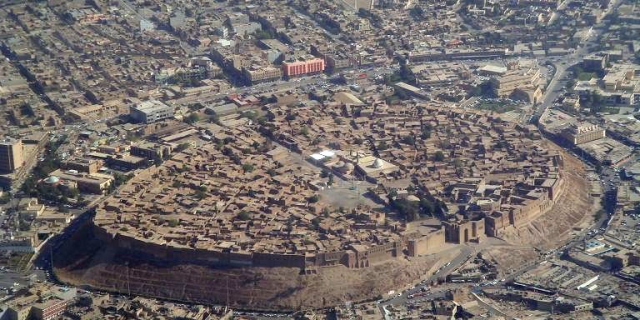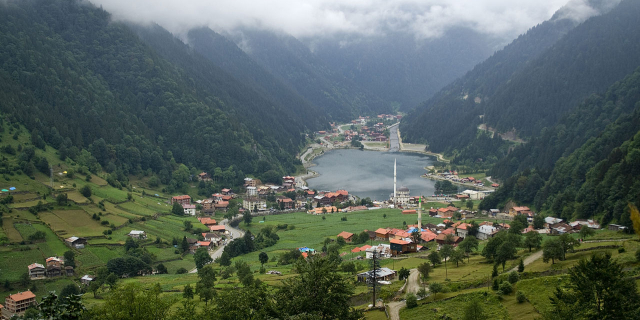Divriği Ulu Camii ve Darüşşifası
( Divriği Great Mosque and Hospital )Divriği Great Mosque and Hospital (Turkish: Divriği Ulu Cami ve Darüşşifası) is a mosque and hospital complex built in 1228–1229 by the local dynasty of the Mengujekids in the small Anatolian town of Divriği, now in Sivas Province, Turkey. The complex is located in the upper town, below the citadel. The exquisite stone carvings and eclectic architecture of the complex places it among the most important works of architecture in Anatolia and led to its inclusion on UNESCO's World Heritage List in 1985.
 The mosque and hospital complex and the upper town of Divriği (view from the north)
The mosque and hospital complex and the upper town of Divriği (view from the north)The city of Divriği was founded in the 9th century under Byzantine rule, but after the defeat of the Byzantines in the Battle of Manzikert (1071) it was occupied by Turkish tribes who settled the region.[1] In this period the region of Anatolia came to be ruled by numerous competing beyliks ruled by local Turkish dynasties and offshoots of the Seljuk dynasty. In the 12th century the Mengujekids or Mengücek dynasty controlled Divriği and other nearby cities such as Erzincan. During the same century, after the death of emir İshak, the dynasty divided into two branches, with one ruling from Divriği while another branch ruled from Erzincan. The Mengujekids were related by marriage to the Seljuks of Konya and acknowledged them as their protectors and allies when the Sultanate of Rum, ruled from Konya, was at the height of its power.[2]: 27–32
The Mengücek rulers were great patrons of arts, science, and literature. Art historian Doğan Kuban argues that this may account for why a group of exceptional artists, necessary for the construction of the mosque and hospital, would have been present in the city around this time.[2]: 30–31 He also notes that the cultural environment in this part of the world was highly diverse and dynamic during this period. Various groups of artisans and craftsmen likely travelled the region and moved from patron to patron, giving rise to an eclectic style of architecture that reflected influences from different places and traditions.[2]
FoundationThe north portal of the mosque gives the date of 626 AH (1228-9) and the name of its patron as Ahmadshāh b. Sulaymān, who is one of the rulers of the Divriği branch of the Mengujekids.[3] The inscription on the portal of the hospital describes the building as a dār al-shifā' ("house of healing") and ascribes its foundation to Tūrān Malik bint ("daughter of") Fakhr al-Dīn Bahramshāh. Fakhr al-Dīn Bahramshāh is the best known Mengujekid ruler whose reign, in Erzincan, lasted for nearly sixty years until his death in 1225. Although it is often assumed that Ahmadshāh and Tūrān Malik were married, there actually is no evidence, inscriptional or otherwise, to prove a matrimonial relationship between these two members of the extended Mengujekid royal family.[3]
The name of the chief architect is inscribed in the interior of both the mosque and the hospital and has been read as Khurramshāh b. Mughīth al-Khilātī. The name indicates his origin in the city of Ahlat, known in the medieval sources as al-Khilāt.[3]
RestorationsAccording to inscriptions, the complex was significantly restored multiple times between the 15th and 19th centuries. More restoration work was carried out in the 20th century to counteract material deterioration and structural problems.[4] In 2010 another major restoration process was decided. After several years of preparation, restoration work began in 2015 when the first tender was held. The project halted and then resumed in 2017, but halted again in 2019 for financial reasons, though many stages of the process were already completed by then. A new tender was held in 2021 and in February 2022 work resumed on the last stages of the restoration process.[5][6]

























Add new comment